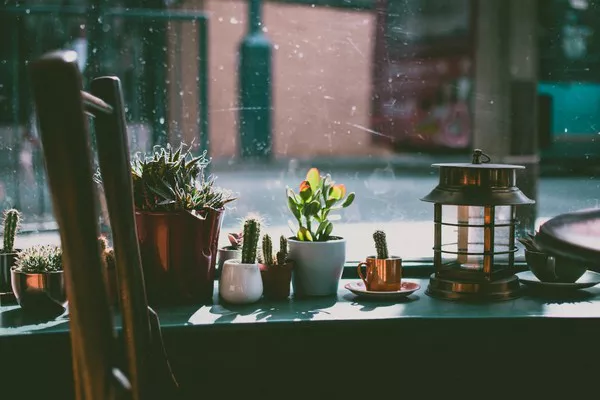Succulents, with their diverse shapes and stunning appearance, have gained immense popularity as indoor and outdoor plants. While they are known for thriving in arid and warm environments, some succulents possess a remarkable ability to withstand harsh winter conditions. As winter approaches, it is essential to understand which succulents can survive the cold and how to care for them during the chilly months. In this article, we explore cold-hardy succulents, their natural adaptations to winter, and practical tips for winter care to ensure these unique plants thrive throughout the colder seasons.
1. Definition of Cold-Hardy Succulents
Cold-hardy succulents, also known as winter-hardy succulents, are those species and varieties that can endure freezing temperatures and even snow without suffering severe damage. Unlike their tender counterparts, which require protection from frost, cold-hardy succulents are resilient and can continue to grow and thrive in colder climates.
2. Examples of Cold-Hardy Succulents
Several succulent genera and species exhibit cold-hardiness. Some of the most popular and reliable cold-hardy succulents include:
Sempervivum (Hens and Chicks): These rosette-forming succulents are well-known for their ability to withstand freezing temperatures, making them a favorite for winter gardens.
Sedum (Stonecrop): With a vast array of varieties, Sedums are versatile succulents that can tolerate cold climates with ease.
Opuntia (Prickly Pear Cactus): These cacti are surprisingly hardy and can tolerate frost and snow, providing a unique addition to winter landscapes.
Agave (Century Plant): Some Agave species, particularly those native to colder regions, have adapted to endure freezing temperatures.
3. Natural Adaptations of Cold-Hardy Succulents
Water Storage and Winter Dormancy
One of the primary reasons cold-hardy succulents can survive winter is their water storage capabilities. During the growing season, they store ample water in their leaves, stems, and roots. As winter approaches and temperatures drop, these succulents enter a state of dormancy, slowing down their metabolic processes and conserving energy. This winter dormancy allows them to withstand colder temperatures while minimizing the risk of freezing and dehydration.
Frost Tolerance
Cold-hardy succulents often have specialized adaptations that enable them to withstand frost. Some species have a waxy cuticle on their leaves, which reduces water loss and provides a protective barrier against freezing temperatures. Others have hairs or trichomes on their surfaces, creating insulation and reducing frost damage.
Deep Root Systems
Certain cold-hardy succulents develop deep root systems that allow them to access water from deeper soil layers. This is especially beneficial during winter when the topsoil may freeze, restricting access to surface water. The ability to reach deeper water sources enhances their chances of survival during prolonged cold spells.
4. Winter Care for Cold-Hardy Succulents
Proper Plant Selection
When planning a winter succulent garden or choosing plants for outdoor winter containers, select cold-hardy succulents that are well-suited to your climate zone. Consult with local nurseries or horticulturists to identify species that thrive in your area’s winter conditions.
Outdoor Protection
While cold-hardy succulents are resilient, providing some protection during extreme winter conditions can benefit their overall health. Consider the following measures:
Mulching: Apply a layer of organic mulch, such as straw or wood chips, around the base of outdoor succulents. Mulch helps insulate the soil and roots, preventing temperature fluctuations and frost damage.
Wind Barriers: Positioning succulents in locations shielded from harsh winter winds can minimize moisture loss and prevent desiccation.
Covering: In regions with exceptionally cold winters, covering outdoor succulents with burlap or frost cloth during severe freezes can provide added protection.
Indoor Care
For potted cold-hardy succulents or those not suited to extreme winter conditions, consider bringing them indoors before the first frost. Place them in a location that receives ample sunlight and maintains a cool indoor temperature.
Watering Adjustments
During winter, cold-hardy succulents experience reduced growth and water requirements. Avoid overwatering, as the combination of cold temperatures and excess moisture can lead to root rot. Allow the soil to dry out between watering sessions.
Monitor Sunlight Exposure
Indoor succulents may receive less sunlight during the winter months. Monitor their light exposure and consider using supplemental grow lights if necessary to maintain their health and prevent etiolation (elongation of stems).
5. Common Mistakes to Avoid
Overwatering
Overwatering is a common mistake made during winter. Cold-hardy succulents may require less frequent watering due to their reduced growth rate. Always check the soil moisture before watering and adjust your watering schedule accordingly.
Lack of Sunlight
Insufficient sunlight can lead to weakened, stretched, and etiolated succulents. Ensure that your indoor succulents receive enough light, and consider rotating them to promote even growth.
Ignoring Signs of Stress
During winter, cold-hardy succulents may still show signs of stress, such as leaf drop or discoloration. Monitor their condition regularly and take appropriate action to address any issues promptly.
Conclusion
Cold-hardy succulents present a fantastic opportunity to enjoy these unique plants year-round, even in colder climates. Understanding their natural adaptations to winter and providing appropriate care during the colder months are essential for their survival and continued growth. By selecting suitable species, providing outdoor protection, and adjusting watering and sunlight exposure, you can create a thriving winter succulent garden that will impress even during the frostiest of seasons. With proper attention and care, these resilient succulents will continue to captivate and add beauty to your surroundings throughout the winter and beyond.


